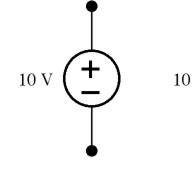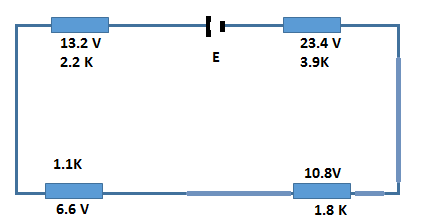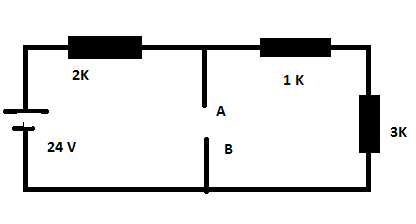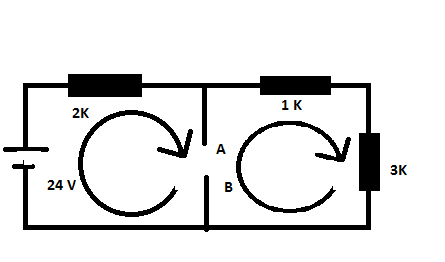The first thing we need to know that It’s the voltage across the device!
B
The above symbol shows that A is 9 times higher than B or, B is 9 Time lover than A .
How ever its does not tell , that what is the value of A and B is .
Now we are clear !!! lets understand some definitions
Electrical Network: A combination of various electric elements (Resistor, Inductor, Capacitor, Voltage source, Current source) connected in any manner what so ever is called an electrical network. We may classify circuit elements in two categories, passive and active elements.
Passive Element: The element which receives energy (or absorbs energy) and then either converts it into heat (R) or stored it in an electric or magnetic field is called passive element.
Active Element: The elements that supply energy to the circuit is called active element.
Bilateral Element: Conduction of current in both directions in an element with same magnitude is termed as bilateral element.
Bilateral Element Example
Resistor
Voltage source
Unilateral Element: Conduction of current in one direction is termed as unilateral
KIRCHOFF’S :Laws
 |
Gustav Robert Kirchhoff (12 March 1824 – 17 October 1887) was a Germanphysicistwho contributed to the fundamental understanding of electrical circuits, spectroscopy, and the emission of black-bodyradiationby heated objects.
He coined the term “black body” radiationin 1862, and two different sets of concepts (one in circuit theory, and one in spectroscopy) are named “Kirchhoff’s laws” after him; there is also a Kirchhoff’s Law in thermochemistry. The Bunsen–Kirchhoff Awardfor spectroscopy is named after him and his colleague, Robert Bunsen. |
Kirchhoff’s Current Law (KCL):
KCL states that at any node (junction) in a circuit the algebraic sum of currents entering and leaving a node at any instant of time must be equal to zero.Here currents entering(+ve sign) and currents leaving (-ve sign)
Similarly
Kirchhoff’s Voltage Law (KVL):
It states that in a closed circuit, the algebraic sum of all source voltages must be equal to the algebraic sum of all the voltage drops.
Example 1
Use KVL to find E
Ans = 54 V
Example 2
Find voltage at A and B
Rt= 2K+1K+3K=6000W
It=V/R =24/6000=4 mA
V1= 4mA*2K=8V
V2= 4mA*1K=4V
V3= 4mA*3K=12V
Applying loops
Solving Loop 1
0=-24+8+Vab
0=-16+Vab
Vab=16 V
Solving Loop 2
-Vab+4+12
0=-Vab+16
Vab=16 V

















